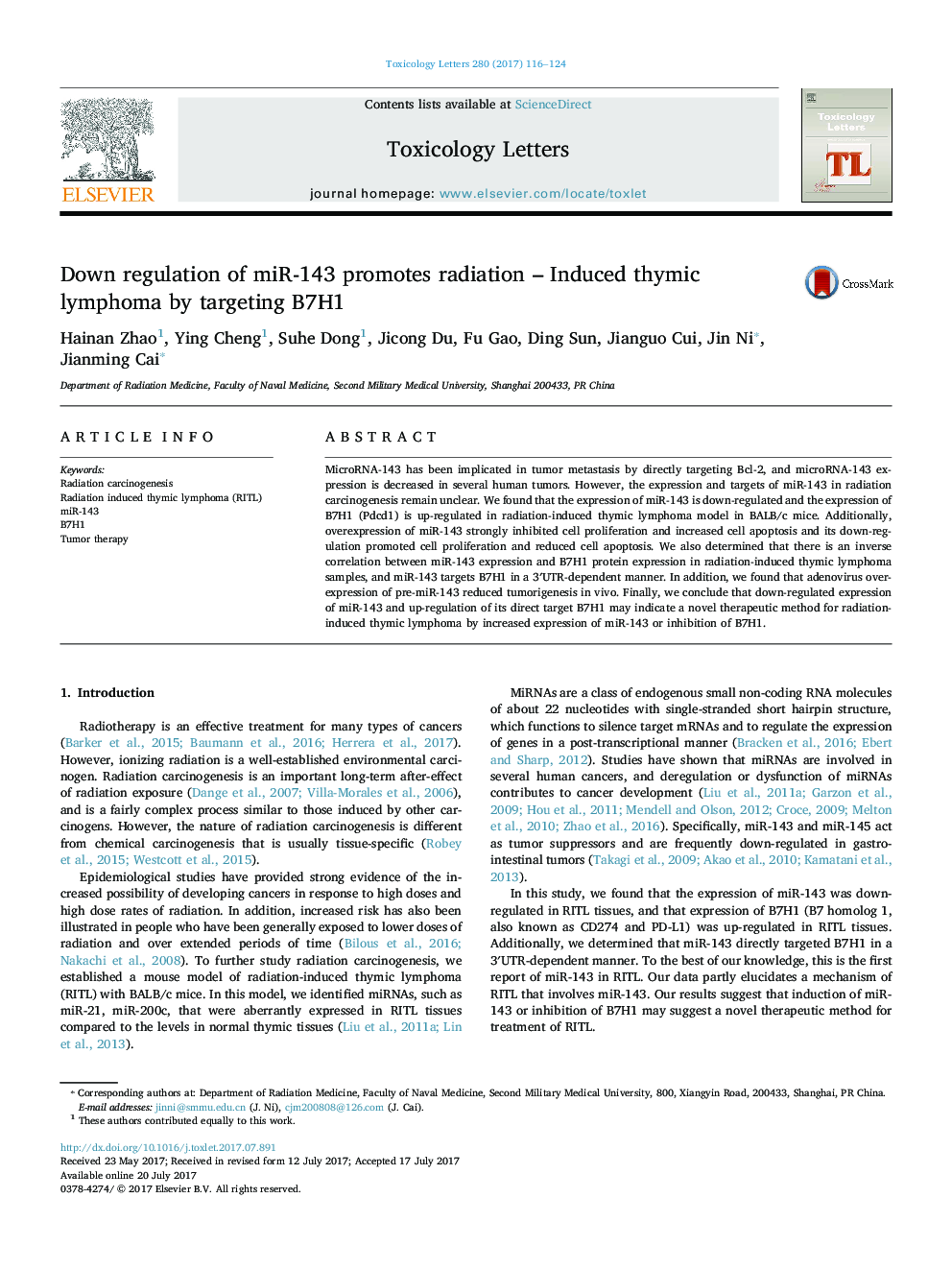| Article ID | Journal | Published Year | Pages | File Type |
|---|---|---|---|---|
| 5562028 | Toxicology Letters | 2017 | 9 Pages |
â¢MiR-143 is down-regulated while B7H1 is up-regulated in RITL model.â¢Overexpression of miR-143 inhibited cell proliferation, increased apoptosis while down-regulation promoted proliferation and reduced apoptosis.â¢B7H1 protein expression levels are inversely correlated with miR-143 expression levels in RITL samples. MiR-143 targets B7H1 in a 3â²UTR dependent manner.â¢Over-expression of pre-miR-143 reduced tumorigenesis in vivo. And B7H1 partially rescued miR-143 mediated apoptosis in vitro.â¢Induction of miR-143 or inhibition of B7H1 may be novel therapeutic methods for RITL.
MicroRNA-143 has been implicated in tumor metastasis by directly targeting Bcl-2, and microRNA-143 expression is decreased in several human tumors. However, the expression and targets of miR-143 in radiation carcinogenesis remain unclear. We found that the expression of miR-143 is down-regulated and the expression of B7H1 (Pdcd1) is up-regulated in radiation-induced thymic lymphoma model in BALB/c mice. Additionally, overexpression of miR-143 strongly inhibited cell proliferation and increased cell apoptosis and its down-regulation promoted cell proliferation and reduced cell apoptosis. We also determined that there is an inverse correlation between miR-143 expression and B7H1 protein expression in radiation-induced thymic lymphoma samples, and miR-143 targets B7H1 in a 3â²UTR-dependent manner. In addition, we found that adenovirus over-expression of pre-miR-143 reduced tumorigenesis in vivo. Finally, we conclude that down-regulated expression of miR-143 and up-regulation of its direct target B7H1 may indicate a novel therapeutic method for radiation-induced thymic lymphoma by increased expression of miR-143 or inhibition of B7H1.
